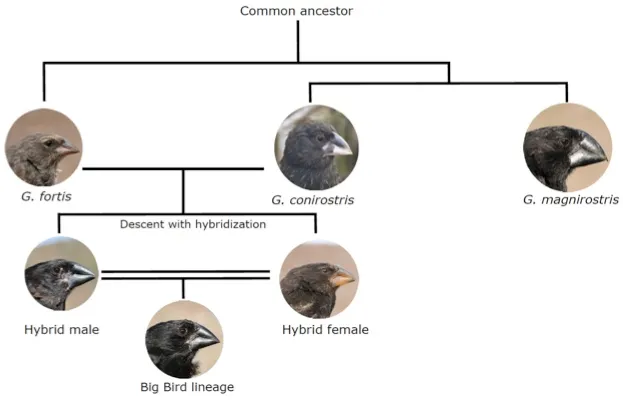The evolution of a new species of finch has been directly observed by scientists.
The discovery was made on the island of Daphne Major in the Galápagos, where a male cactus finch (Geospiza conirostris) was spotted in 1981 having made a remarkable journey of almost 100 kilometres journey from neighbouring Española island.
Unable to make the return flight he bred with a female medium ground finch (G. fortis), one of the three species of finch found on the island, producing a hybrid of the two species.
The male offspring of these two birds had an unusual song that was unable to attract a mate from any of the other species on the island. As a result, they bred with females from their own lineage, creating a distinct species now known as ‘Big Bird’.
"Through our work on Daphne Major, we were able to observe the pairing up of two birds from different species and then follow what happened to see how speciation occurred.,” says Professor B. Rosemary Grant from Princeton University, who has been studying finches from the Galápagos Islands with her husband Peter Grant since the early 1970s.
To be considered a new species, the birds must be effective at competing for food and other resources. Promisingly, the Big Birds have a distinctive beak size and shape that allows them to occupy their own ecological niche, enabling them to hold their own alongside the other finches on the island.
"We have no indication about the long-term survival of the Big Bird lineage, but it has the potential to become a success, and it provides a beautiful example of one way in which speciation occurs," says Professor Leif Andersson from Uppsala University, a co-author of the paper. “Charles Darwin would have been excited to read this paper."

A family tree showing the ancestry of the 'Big Birds' © P.R. Grant and B.R Grant / Princeton
The Big Birds have given scientists the novel opportunity to watch evolution happen in real time, and shown how quickly evolution can occur under the right conditions. Previously, the process of speciation was thought to take hundreds of generations, but these finches did it in just two.
The Big Bird hybrid species has not yet been given a scientific name.
